Is it superfluous to stir with sticks? The experiment shows you how to stir to make a good coffee.
Recently, we found that many people began to add wooden sticks to the process of making hand-brewed coffee, which aroused our curiosity. Isn't it necessary to stir the coffee powder with water all the time?
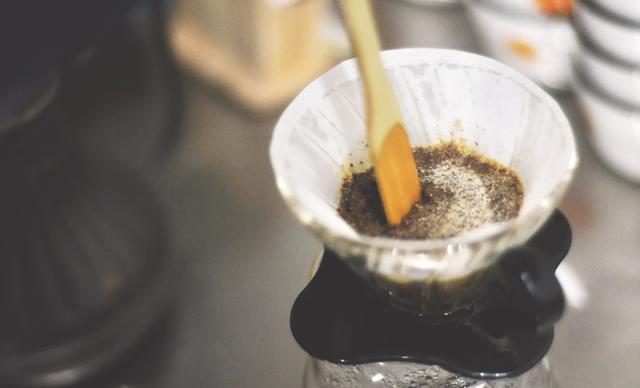
When I raised this question, after a heated discussion, we decided to use experiments to prove that stick mixing may be superfluous at all.
So we decided to conduct three experiments to explore this interesting topic:
According to the extraction principle, if the water and the extract are at the same temperature at the same time and the same solution is extracted under the same disturbance, we do not think that coffee will have the same result at the micro level, but a certain flavor trend can be summed up after many experiments, so we designed the following three conditions for experiments, and used VST concentration meter to detect TDS differences and sensory analysis to establish the flavor.
1. Direct water injection method: continuous water non-stuffy steam spiral water injection method
two。 Standard steaming method: steaming for 30 seconds (medium baking) or steaming for 15 seconds (deep baking) and then spiral water injection
3. Steaming and stirring method: steaming for 30 seconds (medium baking) or steaming for 15 seconds (deep roasting) and stirring with sticks for 10 seconds before continuing spiral water injection
In order to determine whether there is a positive correlation between flavor changes, we added experimental variables to test the changes of medium-roasted and deep-roasted coffee respectively.
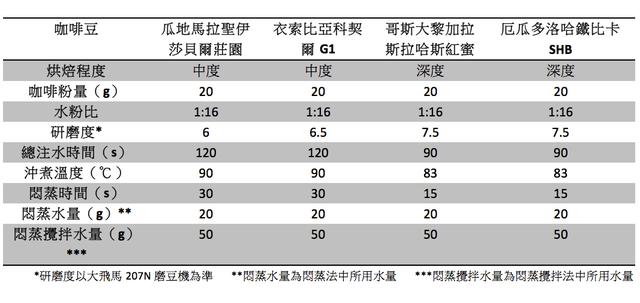
In the course of the experiment, the degree of grinding, the amount of powder, the ratio of water to powder, the total water injection time and the water temperature of each kind of coffee beans are equal. The three kinds of cooking processes are:
Direct water injection method: 320g water was injected at a uniform speed in the whole process, the water injection time of moderate baking was 2min, and the water injection time of deep baking was 1min30s.
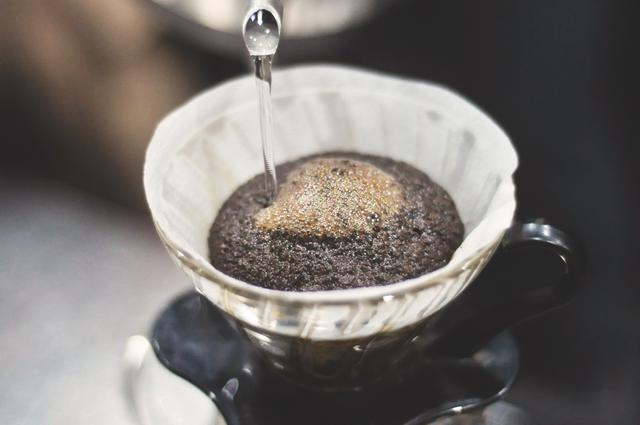
Standard steaming method: first injecting 20g hot water, steaming moderately roasted coffee powder for 30s, then injecting water at a uniform speed and completing it at 2min; deep baking and steaming for 15s, then injecting water at a uniform speed and completing it at 1min30s.
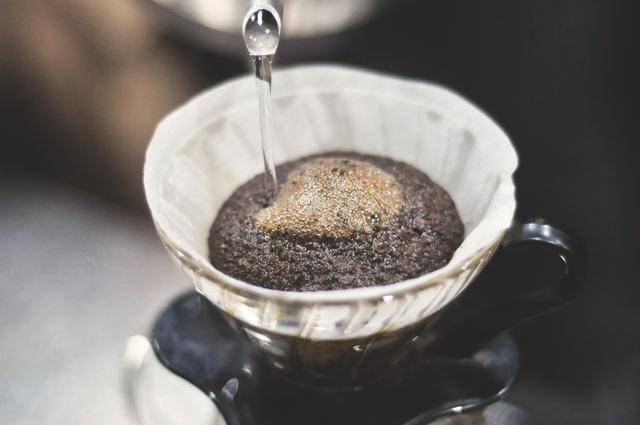
Steaming and stirring method: first inject 50g hot water (due to too little water can not be stirred, so 50g hot water is injected here for steaming time), stir so that the water is in uniform contact with coffee powder, then steam moderately baked coffee powder to 30s and then water injection is completed during 2min; after deep baking and steaming to 15s, water injection is completed at 1min30s. The above three cooking methods finished injecting water at the same time and let all the solution flow before the sensory and TDS measurements were carried out (standard 25 ℃).
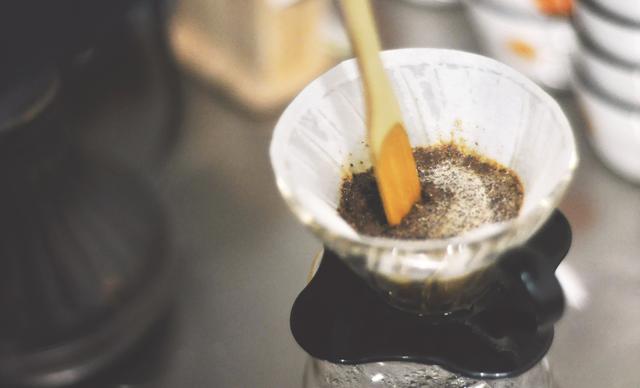
The results are as follows:
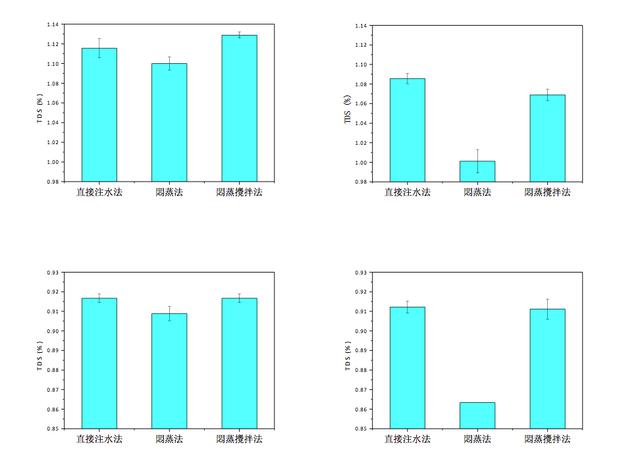
The results of TDS measurement showed that the TDS of coffee liquid obtained by steaming method was lower, while the TDS of coffee liquid obtained by direct water injection method and steaming stirring method was relatively higher. When we draw the time-water injection curve, we find that at any same time in the cooking process, the amount of water injected by the direct water injection method and the steaming mixing method is larger than that of the steaming method, and the powder amount of the three methods is the same, therefore, the solids dissolved by the direct water injection method and the steaming mixing method are more at any same time, although the total time and total amount of water injection are the same. However, the content of soluble solids accumulated by direct water injection method and steaming mixing method was higher.
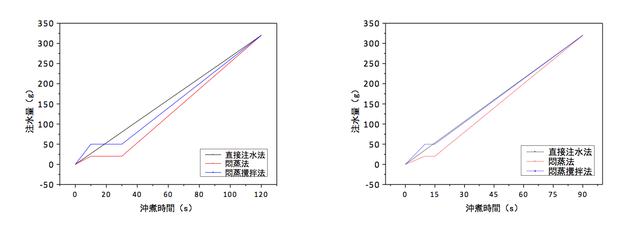
Sensory analysis was conducted in six trained cup testers, and the results showed that all four kinds of coffee beans showed consistent regularity for the three brewing methods.
The coffee of direct water injection method is relatively sour, and the taste is more fresh and bright; the flavor of steaming coffee is more balanced, with sweet and sour feeling; by contrast, the flavor of steaming and stirring method is more insipid, the taste is slightly turbid and dull.
Conclusion and discussion:
We are surprised that this brewing test is highly repetitive, and the results all point to that if this extraction parameter is used, the hand-brewed coffee stirred with wooden sticks will not taste better than the standard steaming method (unless you prefer the thick, not bright and turbid taste), while the direct water injection method will get you a cup of clean, bright, sour and sweet coffee, although the flavor strength (TDS) is high, but the mellow feeling may be lower.
From a data point of view, why the TDS of the standard steaming method is the lowest has troubled us for a while about how to interpret it, until we draw a time-water injection curve, we are surprised to realize that the stuffy steaming method is the least among the three, and the numerical trend of TDS (direct water injection method > steaming stirring method > standard steaming method) is also perfectly positively correlated with the curve distribution in this chart (the proportion of the curve area).
When discussing from the two parts of senses and data, it is difficult for us to explain why there is little difference between the direct water injection method and the steaming mixing method, but the flavor modulation is two extremes. It can only be inferred from the results that the steaming mixing method accelerates the extraction of flavor substances in a relatively short time, dissolves some heterocyclic macromolecules, and causes a relatively turbid taste. In the direct water injection method, the flow also has an effective stirring effect, and effectively increases the extraction rate of small molecular acidic substances, so it shows a bright sense of acid in the sense. We sincerely look forward to more advanced experiments to help explain the essential differences between the two mixing methods.
Although we don't like the flavor of wooden sticks in this experiment, coffee brewing is full of possibilities. Maybe you have other parameters to make better coffee!
Important Notice :
前街咖啡 FrontStreet Coffee has moved to new addredd:
FrontStreet Coffee Address: 315,Donghua East Road,GuangZhou
Tel:020 38364473
- Prev
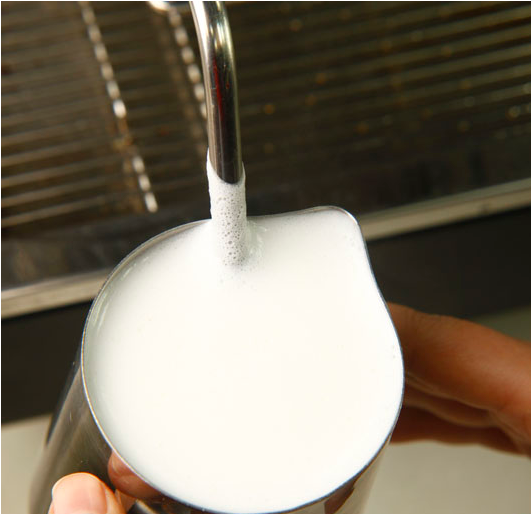
Skills and suggestions on milk foaming with Italian coffee machine
Have you ever had such a cappuccino? It looks like a cup of art and tastes silky? I hope you have, because that's what a cappuccino is all about. If you've ever had a cappuccino like this, I think you'll probably agree with me: it's hard to drink any more bubbly, fluffy cappuccinos. So what makes a real card?
- Next
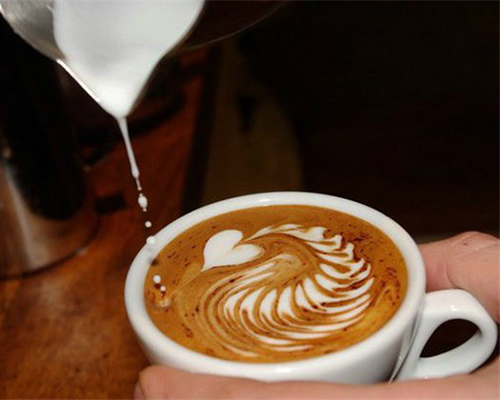
Introduction to the course of making Italian Coffee-- understanding several misunderstandings of making Coffee
Milk is the best companion of coffee, we usually like to add milk when drinking coffee, especially fancy coffee, with beaten milk foam to pull out all kinds of flowers, so that the coffee with milk is both delicious and good-looking. For playing milk foam, there are several common misunderstandings that we need to understand, so that we can make it easier for us to do a better job of playing milk foam. 1: use shaking up and down
Related
- Beginners will see the "Coffee pull flower" guide!
- What is the difference between ice blog purified milk and ordinary milk coffee?
- Why is the Philippines the largest producer of crops in Liberia?
- For coffee extraction, should the fine powder be retained?
- How does extracted espresso fill pressed powder? How much strength does it take to press the powder?
- How to make jasmine cold extract coffee? Is the jasmine + latte good?
- Will this little toy really make the coffee taste better? How does Lily Drip affect coffee extraction?
- Will the action of slapping the filter cup also affect coffee extraction?
- What's the difference between powder-to-water ratio and powder-to-liquid ratio?
- What is the Ethiopian local species? What does it have to do with Heirloom native species?

